Published:
Author: Antonio Maria Guerra
Lambrusco Wine
HISTORY, INFO, PLACES, INTERESTING FACTS

Lambrusco wine is undoubtedly one of the most known and appreciated in the world. Its origins date back to a distant past and are closely linked to the vines growing in the Italian regions of Emilia-Romagna and Lombardy. Let’s find out the history of this delight, how it’s made, the typologies, the best pairings and many interesting curiosities.

The history of Lambrusco wine.
The types of ‘Lambrusco’ currently available on the market boast a very ancient tradition. Their birth is, in fact, closely related to the evolution of the wild vine (‘Vitis Silvestris’) and of the grapes that have always grown in the territory corresponding to the current provinces of Modena, Reggio Emilia, Parma (in the Emilia-Romagna region) and Mantua (in the Lombardy region). It’s therefore hardly surprising that the first written evidence about this plant and its domestication for the production of wine date back to the classical era and are the work of some of the most famous writers of the period such as, for example, Cato (‘De Agri Cultura’), Varro (‘Naturalis Historia’), Pliny the Elder and Virgil (*1).
Read more
The production technique of what would become ‘Lambrusco’ as we know it today was perfected over time. Particularly valuable was, in this sense, the contribution of monks during the Middle Ages.
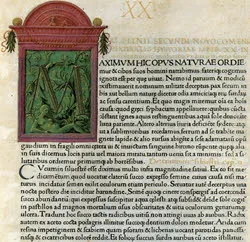 The years between the seventeenth and eighteenth centuries proved to be equally important since bottles of thick glass were gradually adopted: they were, in fact, particularly suitable to withstand the pressure of carbon dioxide that gives to this wine its typical fizziness (*2). From the literary point of view, it’s impossible not to mention the manuscript ‘Del Lambrusco Modonese’ (*3), written by the agronomist Francesco Aggazzotti in 1863: it’s de facto one of the first works aimed at illustrating Lambrusco as a product, starting from the selection of the vines, up to its vinification and marketing.
The years between the seventeenth and eighteenth centuries proved to be equally important since bottles of thick glass were gradually adopted: they were, in fact, particularly suitable to withstand the pressure of carbon dioxide that gives to this wine its typical fizziness (*2). From the literary point of view, it’s impossible not to mention the manuscript ‘Del Lambrusco Modonese’ (*3), written by the agronomist Francesco Aggazzotti in 1863: it’s de facto one of the first works aimed at illustrating Lambrusco as a product, starting from the selection of the vines, up to its vinification and marketing.
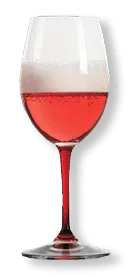 During the second half of the 1900s, the use of the ‘Martinotti method’ led to a significant increase in the production of this specialty and to a boom in sales and exports, especially to the United States. Nowadays, more and more attention is paid to quality rather than quantity, pointing to the enhancement of the incredible versatility of Lambrusco.
During the second half of the 1900s, the use of the ‘Martinotti method’ led to a significant increase in the production of this specialty and to a boom in sales and exports, especially to the United States. Nowadays, more and more attention is paid to quality rather than quantity, pointing to the enhancement of the incredible versatility of Lambrusco.
Notes:
*1: Not surprisingly, the famous poet was originally from the Mantua area;
*2: The cork was of great importance too. At the time, it was fixed with a string;
*3: Manuscript from which he took inspiration for the writing of the essay ‘Sulla fabbricazione del Vino Lambrusco Modenese’ (‘On the manufacture of Lambrusco Modenese wine’);
*4: This is a procedure for making sparkling wines thanks to the use of large pressurized autoclaves;

Lambrusco
THE MOST TRADITIONAL PRODUCERS
This article is the result of collaboration between WebFoodCulture and the Consorzio Tutela Lambrusco: organization gathering the most traditional producers of the famous wine.


How is Lambrusco made?
Lambrusco wine on the market is produced using mainly the following methods:
MARTINOTTI / CHARMAT METHOD Method used to produce both sparkling Lambrusco and Lambrusco ‘spumante’ (*1). This method involves decanting the wine into large pressurized autoclaves where, after the addition of selected yeasts and sugar, a second fermentation begins. This causes the formation of carbon dioxide (*3), which is ‘trapped’ in the wine thanks to the pressure generated in the autoclaves. Later on, the wine is bottled, its effervescence is preserved by a special cork.
Method used to produce both sparkling Lambrusco and Lambrusco ‘spumante’ (*1). This method involves decanting the wine into large pressurized autoclaves where, after the addition of selected yeasts and sugar, a second fermentation begins. This causes the formation of carbon dioxide (*3), which is ‘trapped’ in the wine thanks to the pressure generated in the autoclaves. Later on, the wine is bottled, its effervescence is preserved by a special cork.
CLASSIC / CHAMPENOISE METHOD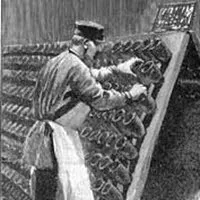 Metodo used to produce only Lambrusco ‘spumante’. This method requires the second fermentation to be started directly in the bottle, thanks to the addition of selected yeasts and sugars.
Metodo used to produce only Lambrusco ‘spumante’. This method requires the second fermentation to be started directly in the bottle, thanks to the addition of selected yeasts and sugars.
The new fermentation causes the formation of carbon dioxide: the gas, trapped, leads to a pressure increase.
Read more
A third method, used to produce ‘artificial’ sparkling wine, consists of blowing carbon dioxide into pressurized autoclaves full of wine so that the latter incorporates it. Although this method is faster, it’s not ideal to achieve optimal results, giving life to a type of Lambrusco quite unrefined.
Notes:
*1: The main difference between the two types lies in their minimum ‘overpressure’ value. In Lambrusco ‘spumante’ this is 3 bars, while in sparkling Lambrusco, it can range between 1 and 2.5 bars;
*2: Fermentation at controlled temperature;
*3: The presence of carbon dioxide causes the formation of ‘bollicine’ (‘bubbles’);

Lambrusco: the production areas.
The grapes used to make Lambrusco come from two adjacent Italian regions.
- Emilia-Romagna: in the area of the Province of Modena, Reggio Emilia and Parma;
- Lombardy: in the area of the Province of Mantua;
Considering the specific characteristics of these territories, it should not surprise that, in each of them, this wine gets different traits.


The Lambrusco vines.
As already specified in the paragraph about the origins of Lambrusco, this wine is the result of the slow evolution of wild grapes that have grown since time immemorial in the area between the Italian regions of Emilia-Romagna and Lombardy (*1). Needless to say that, nowadays, the number of vines used for its production has been precisely defined and can be found in the ‘National catalog of vine varieties’ (‘Catalogo Nazionale delle varietà di vite’) drawn up by the Ministry of Agriculture, Food and Forestry.
Here follows the complete list of the thirteen Lambrusco vines:
- Lambrusca di Alessandria;
- Lambrusco a Foglia Frastagliata;
- Lambrusco Barghi;
- Lambrusco Benetti;
- Lambrusco del Pellegrino;
- Lambrusco di Sorbara;
- Lambrusco Grasparossa;
- Lambrusco Maestri;
- Lambrusco Marani;
- Lambrusco Montericco;
- Lambrusco Oliva;
- Lambrusco Salamino;
- Lambrusco Viadanese;
It’s, therefore, possible to affirm, without fear of contradiction, that, over the centuries, Lambrusco has developed an indissoluble bond with its territory. A bond including not just environmental factors, but also historical and cultural ones: elements that make this wine unique and impossible to replicate in other places.

Pavarotti's songs for Lambrusco wine.
Great was Luciano Pavarotti’s passion for the most typical specialties of his native land, the province of Modena. Among these, Lambrusco.
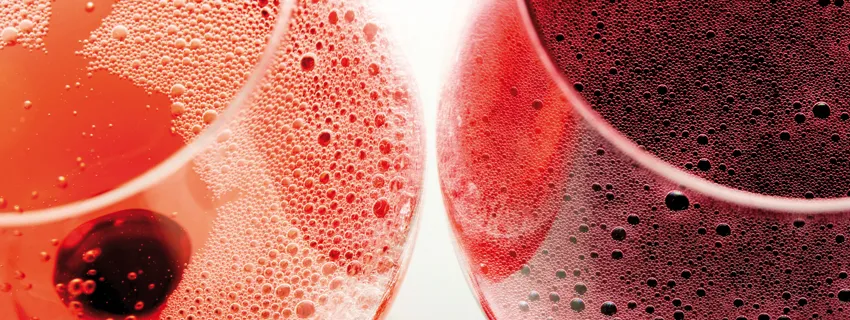
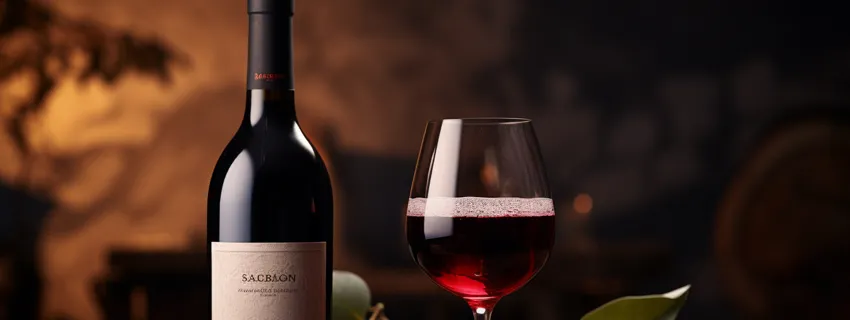
The types of Lambrusco wine.
There are different types of Lambrusco: in this regard, it’s essential to emphasize that the vine varieties used for its production and the territories in which these varieties grow are important factors deeply influencing its taste and appearance.
That said, the types are:
Read more
- Sparkling Lambrusco and Lambrusco ‘spumante’: the main difference between the two consists (other than the production method) in a different ‘overpressure’ value (‘sovrapressione’), due to the amount of carbon dioxide contained in the wine (*1). In the ‘spumante’ wine, this overpressure is always higher.
There is also a Lambrusco ‘fermo’ (‘still’), that is to say devoid of effervescence, but it’s produced in very small quantities; - ‘Dry’, ‘sweetish’ and ‘sweet’ Lambrusco: these types differ from each other for their respective ‘sugar concentration’, consisting of the different quantity of sugar present in the wine. In the ‘dry’ it’s minimal, gradually increasing up to the ‘sweet’;
- ‘Red’ and ‘rosè’ Lambrusco: Lambrusco is generally produced with black grapes, that’s why a great part of this wine on the market is red. However, there is also a Lambrusco ‘rosè’ (‘pink’): this color is due to particular production techniques. The ‘white’ (‘bianco’) Lambrusco is very rare.

The Lambrusco wine designations.
There are currently seven DOC (Controlled Designation of Origin) Lambrusco.
Four of them are produced in the territory of the Italian Province of Modena:
- Modena DOC;
- Lambrusco di Sorbara DOC;
Read more
- Lambrusco Grasparossa di Castelvetro DOC;
- Lambrusco Salamino di Santa Croce DOC;
Two are produced in the Province of Reggio Emilia:
- Reggiano DOC;
- Colli di Scandiano e di Canossa DOC;
One in the Province of Mantua:
- Lambrusco Mantovano DOC;
Finally, it should be noted that some Lambrusco wines are IGT (Typical Geographical Indication):
- Lambrusco Emilia IGT;
- Lambrusco Mantovano IGT;
- Lambrusco Quistello IGT;

Lambrusco: the origins of the name.
The origins of the name ‘Lambrusco’ are uncertain. Over the years, many theories have have come to attention. The most favored one suggests that the word could derive from the fusion of two Latin terms, namely ‘labrum’ (‘edge’, ‘margin’, ‘rim’) and ‘ruscus’ (‘bush’) (*1):
Read more
this would indicate the close relationship between the vines used for the wine and the ‘vitis sylvestris’ (or ‘vitis labrusca’) (*2) which, in classical era, grew in the territories between the current Emilia-Romagna and Lombardy.
According to another theory, ‘ruscus’ should be translated in ‘pungent’, with clear reference to the sourness of the grapes produced by wild plants.
Notes:
*1: With clear reference to the plants growing spontaneously on the edge of the cultivated fields, along the irrigation canals;
*2: Wild vine;

Lambrusco wine, the Americans and ‘Coca Cola’.
During the 60s and 70s of the last century, the use of the ‘Martinotti’ (or ‘Charmat’) method for the production of Lambrusco began to take hold. If, on the one hand, this led to a significant increase in the number of bottles in commerce, on the other hand, it led many companies to pay more attention to the quantity rather than the quality of the wine.
Read more
This kind of Lambrusco, although not very ‘elegant’, was very easy to drink and quite cheap, so much to gain the favor of the American consumers, who began to consider it a sort of ‘Italian Coca Cola’. Today, the trend is to preserve the ease of drinking, trying at the same time to enhance the characteristics that make this wine specialty unique.
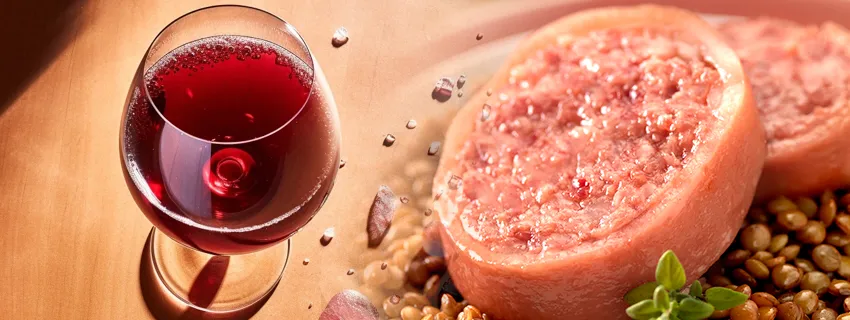
Lambrusco wine: pairings.
Lambrusco is the perfect accompaniment to many specialties. A good number of them, coincidentally, have the same birthplace of this wine: the Italian Region of Emilia-Romagna. It should not be too surprising, considering that in this region a large number of the most famous cured meats in the world are produced:
Continua
delicacies such as Mortadella, Cotechino, and Zampone, not to mention famous cheeses, such as Parmigiano Reggiano.
The organoleptic characteristics of Lambrusco (above all, the lively effervescence and the pleasant tannins), are just perfect for balancing the fatness of this food, giving life to harmonious and irresistible combinations.

Giuseppe Verdi and Lambrusco wine.
Perhaps not everyone knows that Giuseppe Verdi, the very famous Italian composer, author of immortal works such as ‘La Traviata’, ‘Il Trovatore’ and ‘Rigoletto’, loved not only music but also food and wine.
Read more
This should not surprise too much, considering that the great musician was not the only son of an innkeeper, but was also born in the town of Busseto, in the province of Parma: that is to say one of the most interesting places in the world from a culinary point of view.
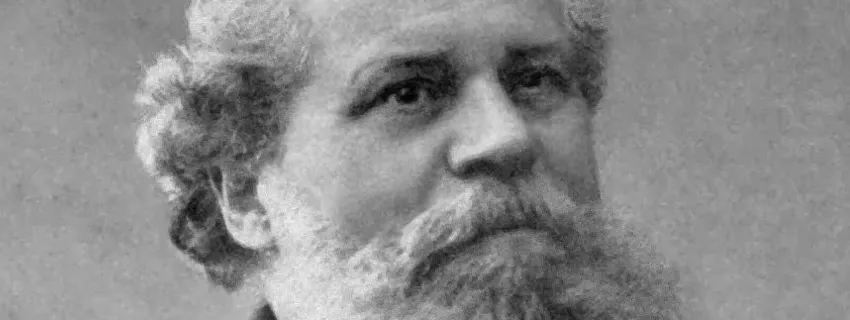
Carducci and Lambrusco wine.
Among the many fascinating curiosities about Lambrusco, it’s worth remembering that the famous Italian poet Giosuè Carducci loved quite a lot this wine, so much so that he glorified it in one of his letters using these words:
Read more
“Don’t you know, dear Countess, that Domineddio made Lambrusco to be combined with the meat that Antonio Abate loves so much? And I, to glorify God and bless his providence, stayed in Modena for a long time so that I could meditate on the wisdom…”

Consorzio Tutela Lambrusco: contacts.
Address: Viale Virgilio, 55
41123 Modena
Website: www.lambrusco.net
Mail: tecnico@tutelalambrusco.it
Tel.: +39 059 208610
Copyright information.
The images displayed in this page belong to WebFoodCulture and to the Consorzio Tutela Lambrusco, with the exception of:
Public Domain
- Giosuè Carducci, 1900 (Wikipedia Link)
- Coca Cola, poster, 1890 (Wikipedia Link)
- Portrait of Giuseppe Verdi, 1886, G. Boldini (Wikipedia Link) {PD-Art} {PD-US}
